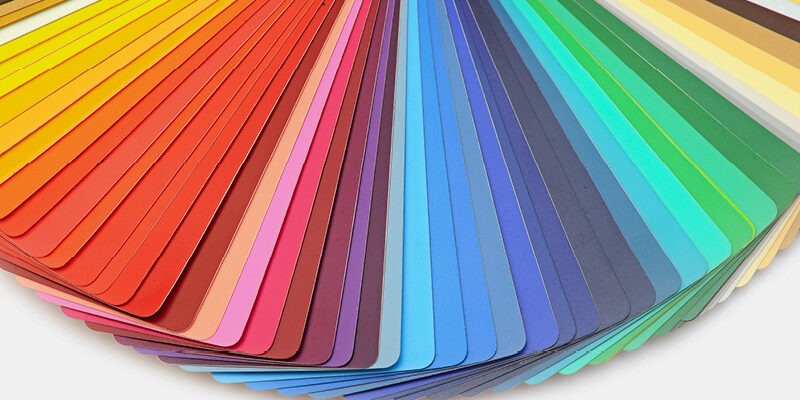How to Use Color in Emails to Improve Comprehension and Conversions
When crafting effective, high-converting emails, color is one of the most powerful elements at your disposal, and fortunately it’s something you can customize and refine. Using color strategically doesn’t just make your emails more visually attractive, it can also enhance reader comprehension and encourage action.
This article looks at how to use color intentionally to boost email comprehension and conversions. You’ll learn some key color principles to increase accessibility, how color guides eye flow, and how color psychology impacts reader engagement.
The Power of Color in Emails
Making the right color choices for fonts, backgrounds, and design elements can instantly make any email more compelling and memorable. It also strengthens brand image, as appropriate colors demonstrate that you value quality and presentation.
Color taps into emotions in a subtle yet profound way. Warm tones like red, orange, and yellow project excitement, passion and energy. Meanwhile, cooler blues and greens evoke stability, trust, and calm – just visit any bank’s blue-bathed website.
Using color strategically to complement your core messaging can get your readers in the right mindset and make them more receptive to your messages – as soon as they open your email. It might not be the only factor, but color influences emotions more than many people realize.
Improving Comprehension with Color
Accessibility
Ensuring your colors are accessible, readable, and easy on the eyes is key to successful communication. You want to avoid color combinations that strain the eye or lack sufficient contrast between backgrounds and fonts. Various online tools allow you to input hex codes and confirm ratios meet accessibility standards.
Likewise, certain color blindness types like red-green color blindness can impede readability if the wrong color combinations are used. Online color blindness simulation tools allow you to visualize how your palette appears to those with vision deficiencies. You can then make adjustments accordingly.
Navigation
Once accessibility is covered, subtle color coding of sections or types of information can help readers mentally process content architecture and flow. Try highlighting headings and subheadings using different shades of the same base color. This creates a clear hierarchy and strengthens relationships between topics at a glance. You can also color code certain categories of links using this same principle.
Use bolder, brighter colors for your main clickable calls-to-action (CTAs). At the same time, use softer tints to deemphasize peripheral information surrounding the main CTA button or text link. This quickly directs focus where intended.
Elaboration
With accessibility and navigation optimized, you can get more creative. For example, overlay a promotional offer within the body copy on a full-width colored bar to make it stand out. Or display social proof on a softly colored background to add some visual flair.
Just take care not to go overboard – you want decorative touches to attract eyes but not deter users from taking action. Make sure colors used for aesthetics don’t clash with your main palette and the overall purpose of the email.
Boosting Conversions with Color
Because of learned associations, colors can evoke emotional responses that shape how people react and behave. Choose your color combinations carefully to shape the reader’s mindset. For example:
Yellow promotes positivity, making people receptive to upbeat messaging.
Amber has a more muted, relaxed feel which can put people at ease.
Orange conveys excitement and can make people more eager to interact and click.
Red signals urgency and can encourage impulse purchases. Consider using it to highlight discounts or deadlines, but use it sparingly for maximum impact.
Magenta is a more mysterious color, which can make people curious to learn more.
Purple inspires creativity and innovative thinking.
Calming light blue and lavender provide relaxation – perfect for reassuring emails.
Dark blue is associated with professionalism and can add credibility to more formal communications.
Teal is associated with intelligence and calmness, giving people confidence in expertise.
Green implies eco-consciousness, which can be used to communicate your brand’s ethical values. It’s also associated with health and wealth, so it’s a great choice for brands wanting to convey success.
While brand consistency matters, it’s important to experiment with different color choices – even subtle shifts can impact messaging and tone. When selecting colors, ensure surrounding elements like imagery and wording align.
For promotions, test bright colors against more conservative brand tones. Avoid overly playful colors unless they genuinely fit your brand’s identity – promotions should feel exciting but legitimate.
Regarding your primary CTA button, A/B testing different colors can reveal what motivates your audience best. Brighter, warmer colors often outperform blacks, grays or muted tones. But results depend on factors like audience, industry, offer details, and overall design. Crunch the numbers to see how subtle variations influence conversions for each email. Regular testing will help you determine optimal colors over time and focus on top performers.
While the psychological impacts of color are important, always consider the overall aesthetic appeal of emails too. If designs become too visually busy, tone down colors as needed to avoid overwhelming readers.
Making Emails Clear and Effective with Color
Email comprehension and conversions are not mutually exclusive. Strategic use of color can improve accessibility and guide readers toward key actions. Testing different colors across design elements while tracking performance can reveal winning combinations that inform your future email designs. Just remember to pay attention to important details like consistent CTA colors and links. When you use color psychology thoughtfully and keep your target audience in mind, you can help increase email engagement, customer loyalty, and conversions over time.







